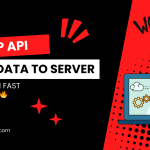The Best Fluffy Pancakes recipe you will fall in love with. Full of tips and tricks to help you make the best pancakes.
The Rise of Edge Computing in IoT
Internet of Things (IoT) devices have become increasingly prevalent in our daily lives, from smart home appliances to industrial sensors. These devices generate massive amounts of data that need to be processed and analyzed in real-time to extract valuable insights. Traditionally, this data processing was done in centralized cloud servers, but with the advent of edge computing, a paradigm shift is occurring.
What is Edge Computing?
Edge computing involves processing data closer to the source of its generation, i.e., at the ‘edge’ of the network, rather than relying on a centralized cloud server. This approach brings computation and storage capabilities closer to where the data is being generated, reducing latency and improving efficiency.
Benefits of Edge Computing in IoT
1. Reduced Latency: By processing data closer to where it is generated, edge computing significantly reduces latency, enabling real-time decision-making and faster response times.
2. Bandwidth Optimization: Edge computing helps in reducing the amount of data that needs to be transmitted to the cloud, thereby optimizing bandwidth usage and lowering costs.
3. Improved Security: With sensitive data being processed and analyzed locally, edge computing enhances security by minimizing the risk of data breaches during transit to the cloud.
Use Cases of Edge Computing in IoT
1. Smart Cities: Edge computing is revolutionizing how smart cities manage traffic flow, public safety, and energy consumption by enabling real-time data analytics at the edge.
2. Healthcare: In the healthcare sector, edge computing can facilitate remote patient monitoring, predictive maintenance of medical equipment, and personalized treatment recommendations.
3. Manufacturing: Edge computing optimizes production processes by enabling predictive maintenance of machinery, real-time quality control, and efficient inventory management.
Challenges and Future Outlook
While edge computing offers numerous benefits, it also poses challenges such as managing distributed infrastructure and ensuring data consistency. However, with ongoing advancements in edge computing technologies, the future looks promising for IoT applications, with greater efficiency, scalability, and intelligence.




